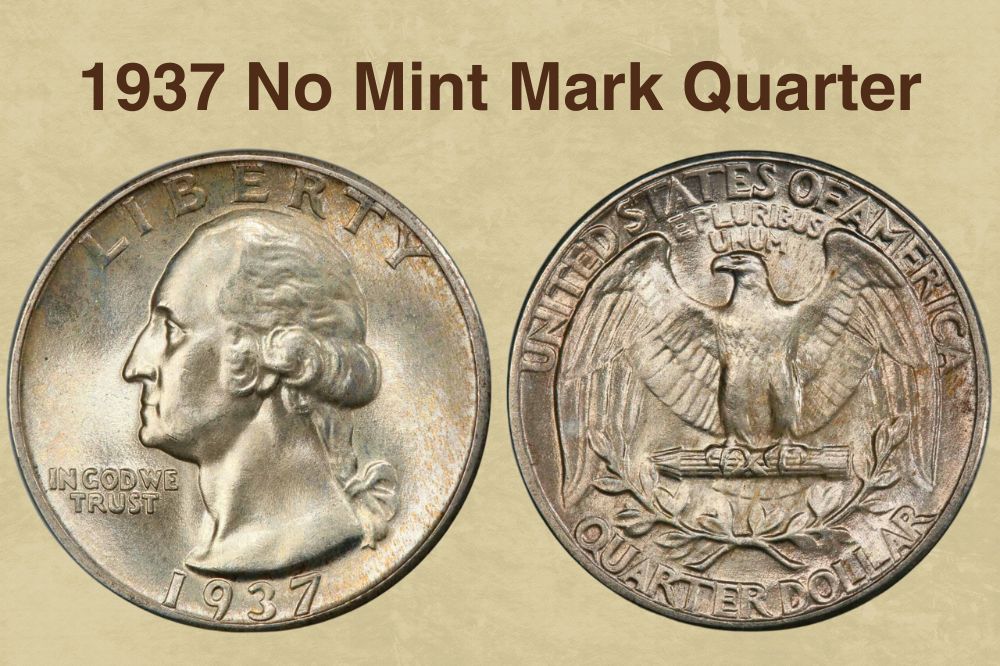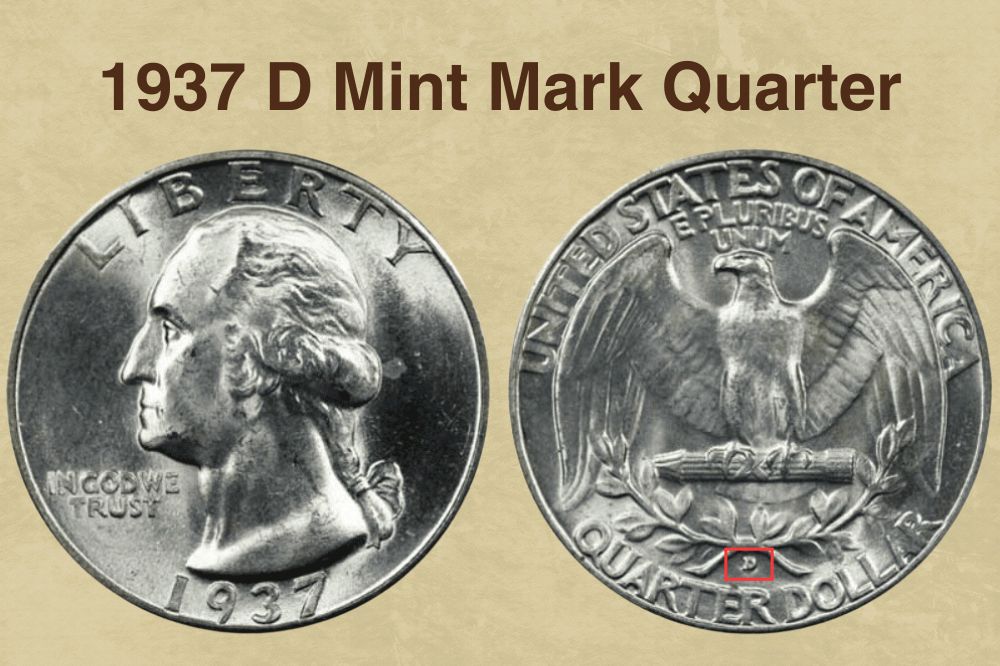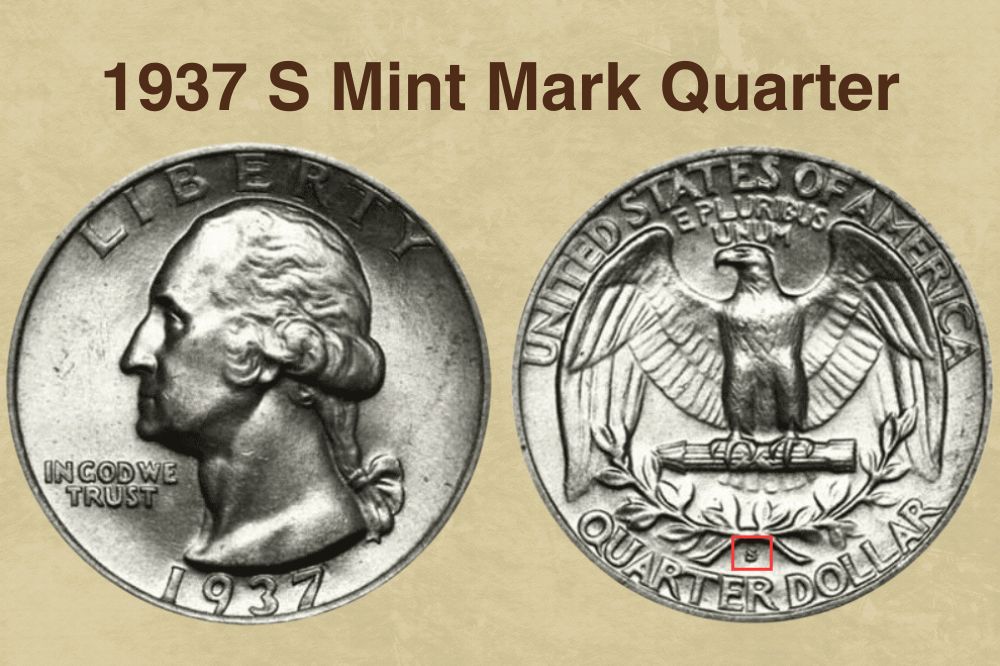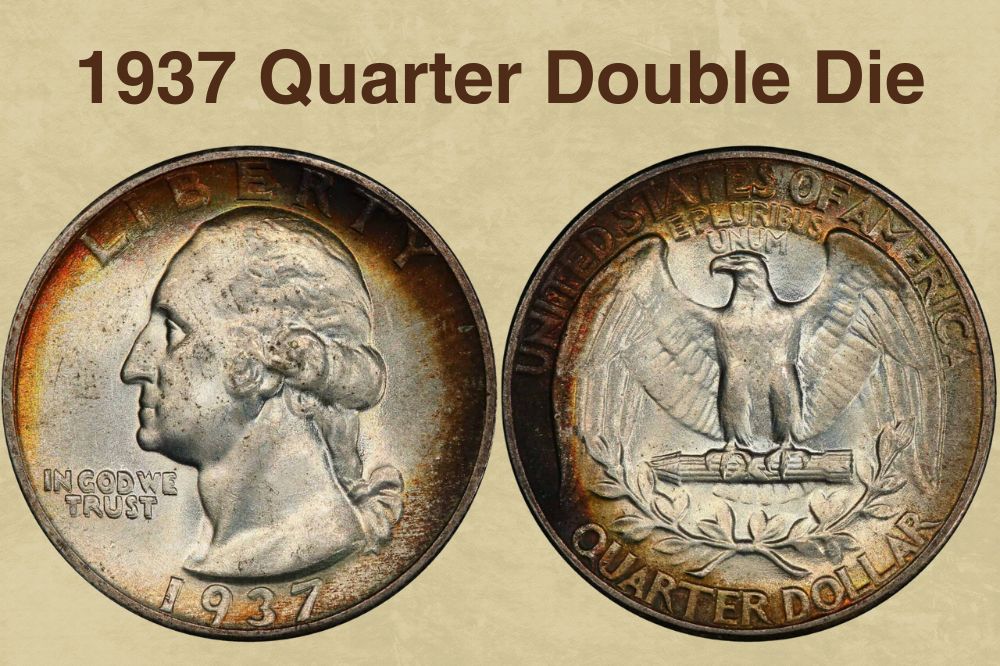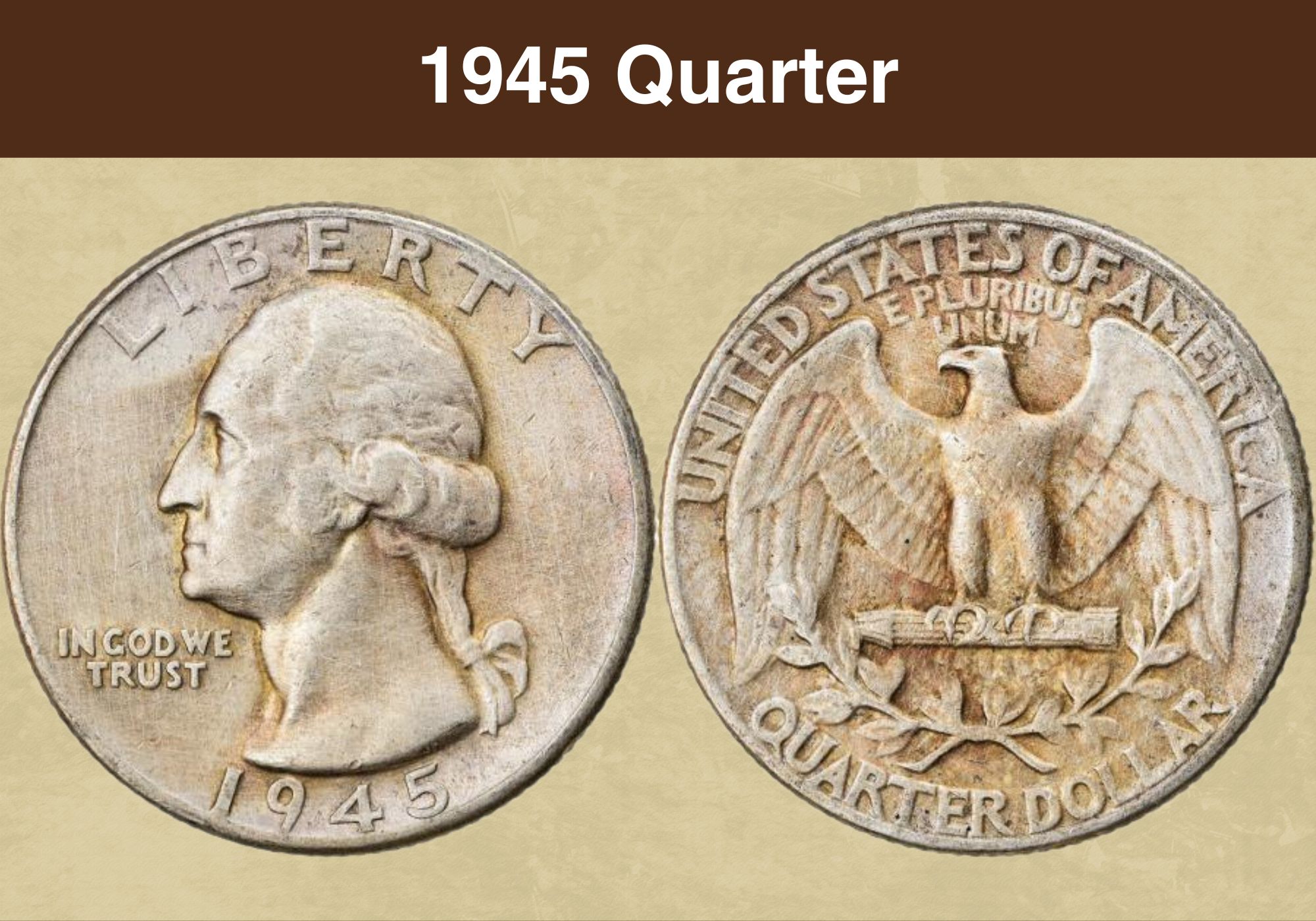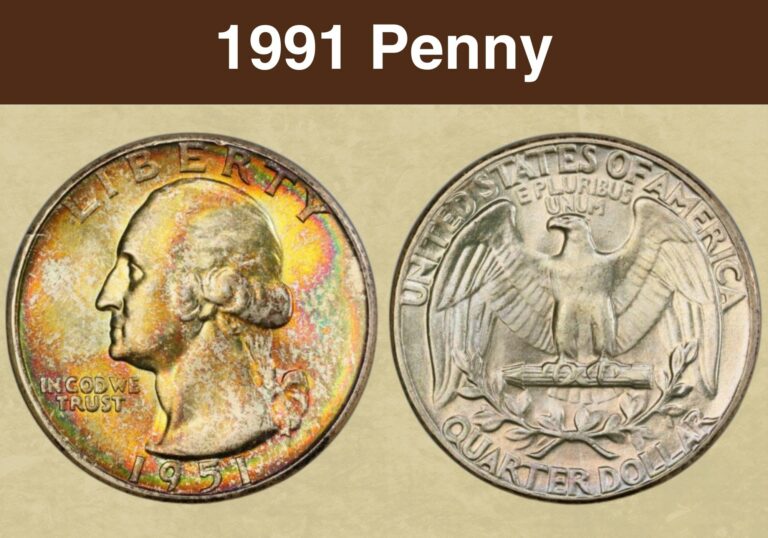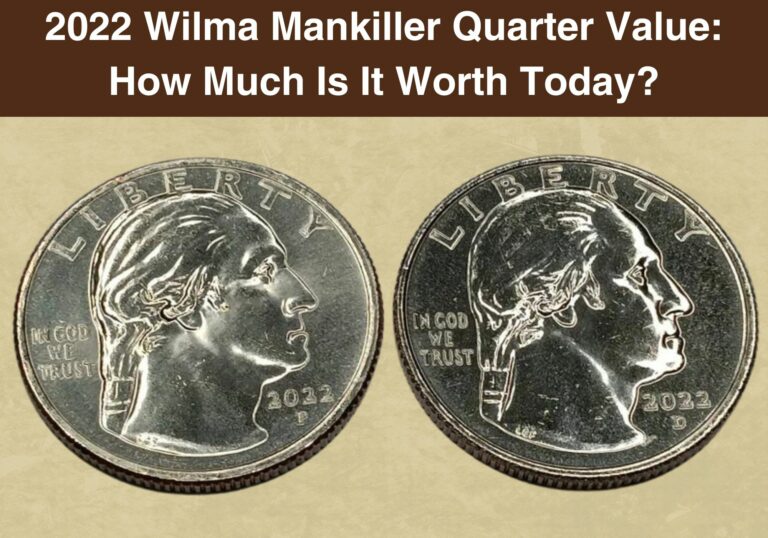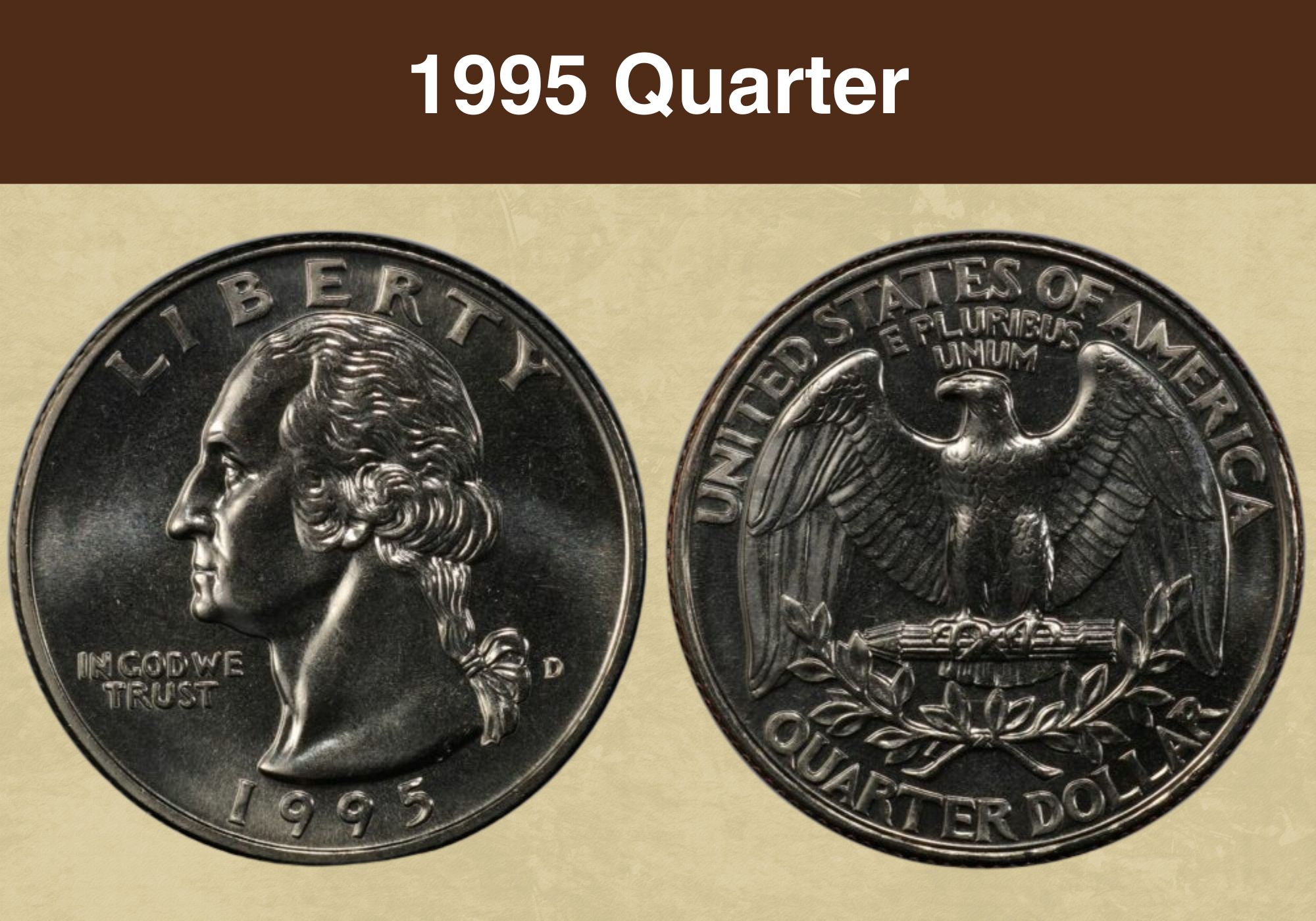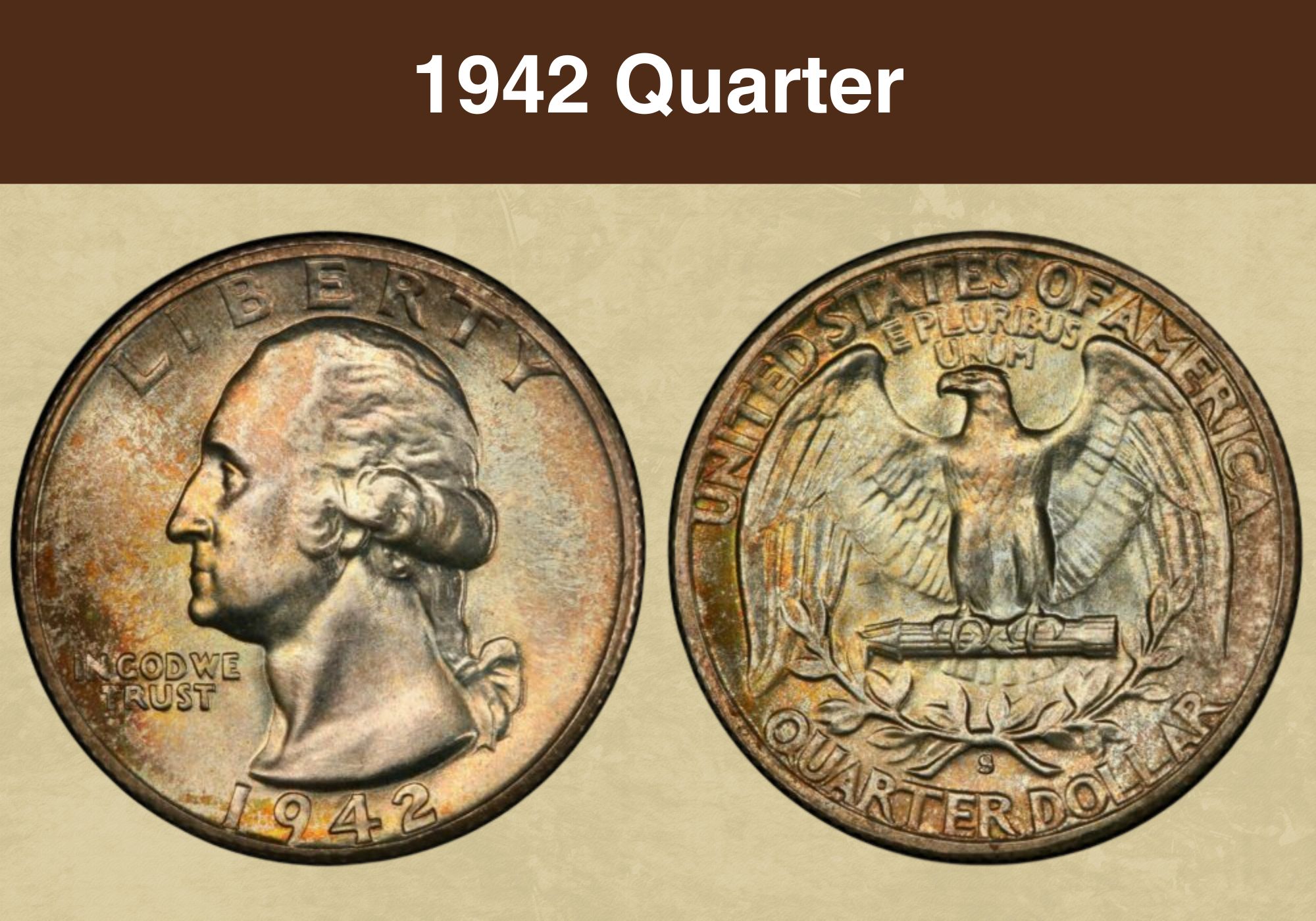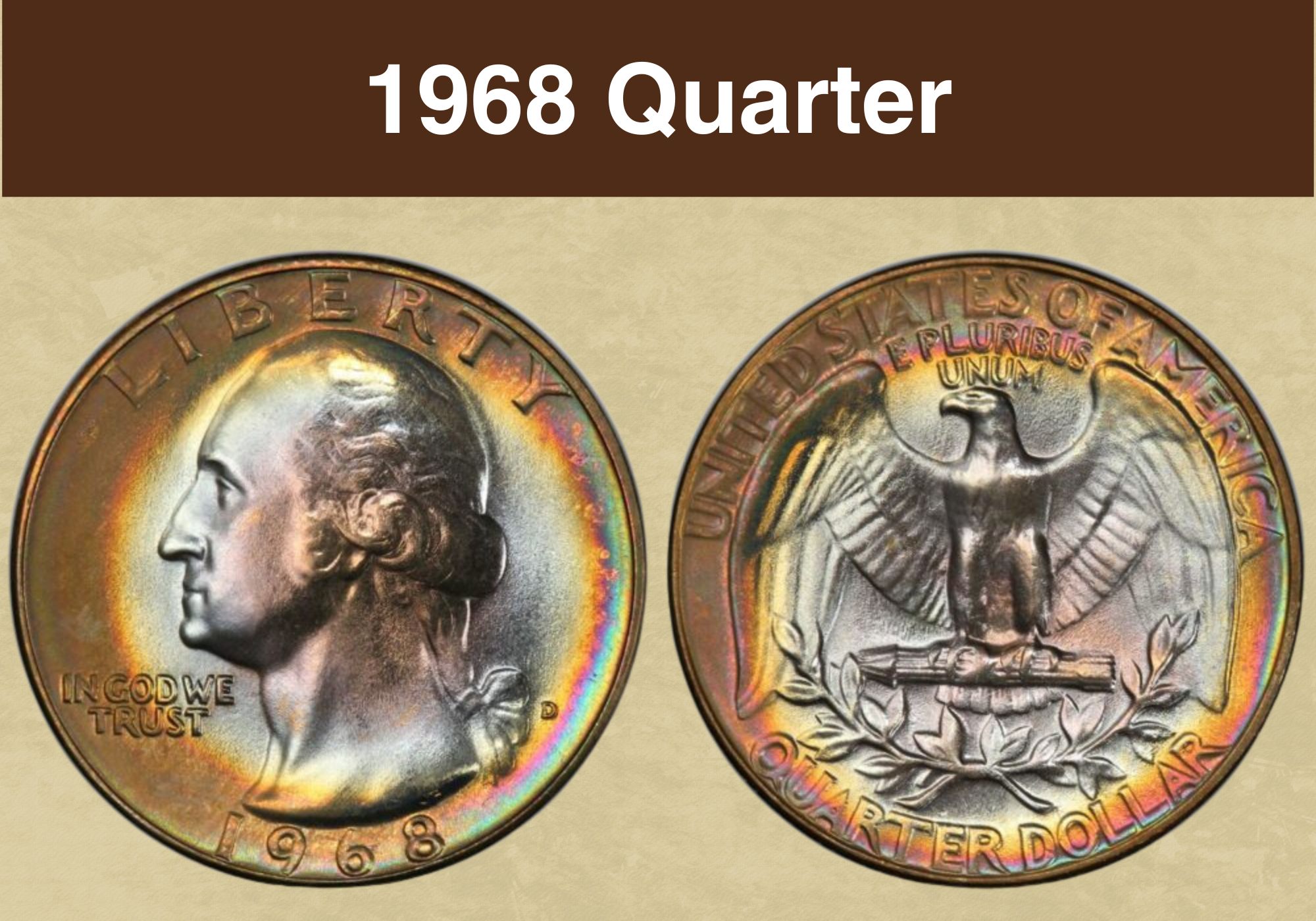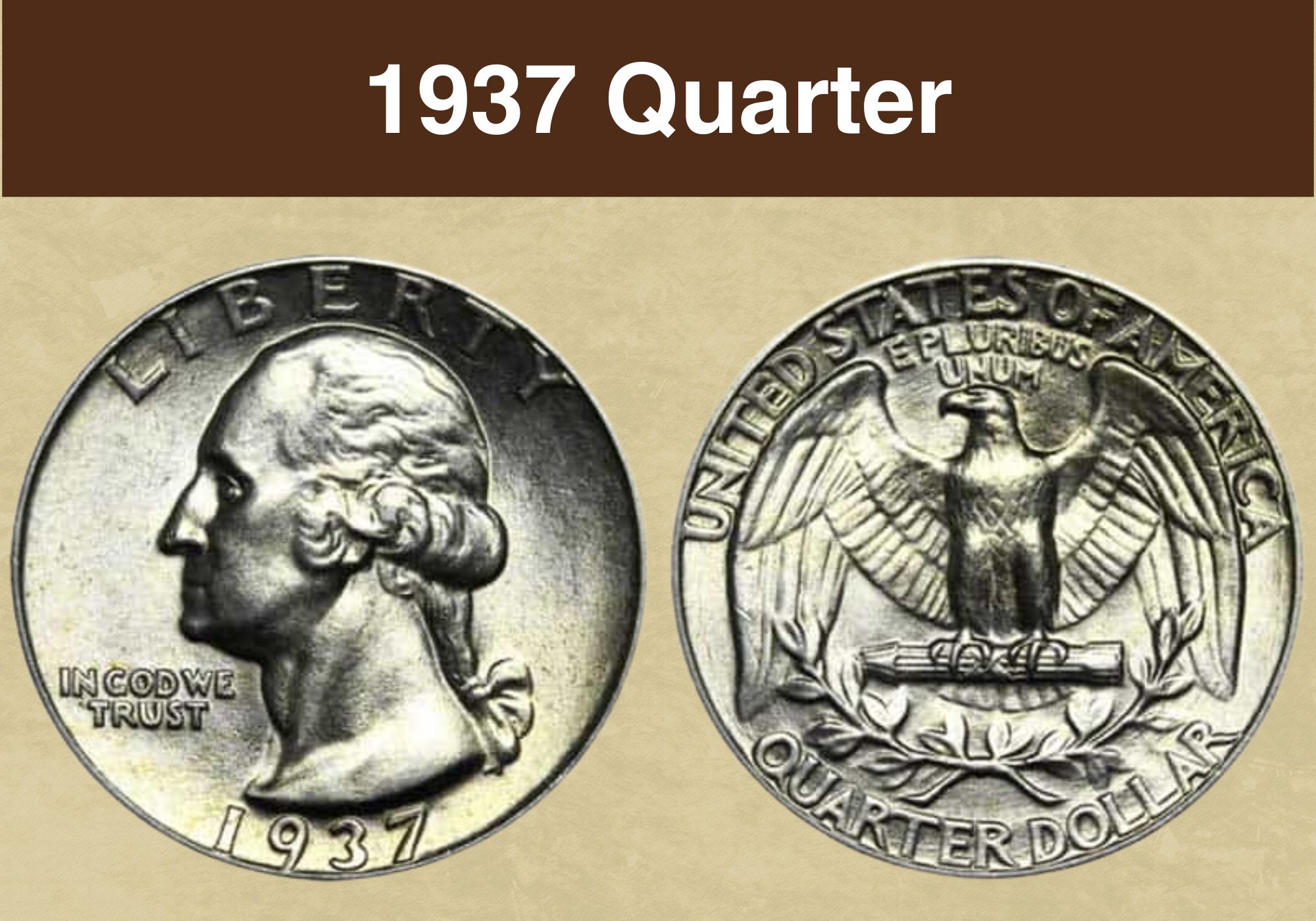
Coin Value Contents Table
Among coin collectors, the 1937 Washington quarter that the US Mint produced quickly rose to fame. Even though it only appears to be worth 25 cents, the 1937 quarter has garnered a lot of fascination throughout the years.
Because of its numismatic significance and current value, it is the subject of much interest among admirers today. Come along with us as we explore the fascinating history of the 1937 quarter and embark on a journey through the world of coin collecting to learn more about its worth.
1937 Quarter Value Chart
| Mint Mark | Good | Fine | Extremely Fine | Uncirculated |
| 1937 No Mint Mark Quarter Value | $8.50 | $9.50 | $20 | $35 |
| 1937 D Mint Mark Quarter Value | $9 | $12.50 | $25 | $67 |
| 1937 S Mint Mark Quarter Value | $12.50 | $20 | $60 | $190 |
1937 Quarter Grading
In order to assess a coin’s value and authenticity, grading is a crucial component in coin collecting. On a scale from poor to mint state, the 1937 quarter can be graded like any other coin. In order to grade a coin, its brilliance, surface preservation, strike, and eye appeal must all be considered.
Because it has a considerable impact on value, the 1937 quarter’s grading is particularly crucial. If you want to know how to grade your Washington coin before you get it to an expert, you can check out this.
| # | Grade |
|---|---|
| 1 | Basal State-1 |
| 2 | Fair |
| 3 | Very Fair |
| 4, 5, 6 | Good |
| 7, 8, 10 | Very Good |
| 12, 15 | Fine |
| 20, 30 | Very Fine |
| 40 | Extremely Fine |
| 50 | About Uncirculated |
| 60 | Mint State |
| 65 | Mint State |
| 70 | Mint State |
Please check our grading guides to know your coin scale, It’s the necessary step to know the exact value of your coin.
Check out now: How to Grade Washington Quarter?
1937 No Mint Mark Quarter Value
In 1937, the United States produced a number of quarters without a mint mark, which reveals a great deal about the coin’s origin. The lack of a mint mark shows that the currency was produced in Philadelphia, the nation’s oldest mint that has been in continuous operation since it was founded in 1792. 1937 No Mint Mark Quarter is one of this illustrious mint’s most unique designs, along with the legendary American Eagle and Liberty Bell.
1937 No Mint Mark Quarter’s beautiful design is among the most remarkable qualities that you will notice. The image of George Washington’s profile is depicted on the coin’s reverse side. An eagle with its wings spread wide and holding an olive branch and arrows in its talons is on the reverse side of the coin. These particulars make the coins highly prized by collectors, as are the exquisite lettering and stunning patina that many of these coins have acquired over time.
Depending on its condition, a 1937 No Mint Mark Quarter’s worth changes significantly. Poorly kept coins might only be worth a few dollars, whereas well-preserved ones might sell for thousands of dollars at auction. If you are a collector, you will particularly admire rare coins that have been well-preserved and have little to no wear, a silver shiny finish, and can fetch high prices.
It’s interesting to note that compared to other 1937 quarters, the No Mint Mark quarter was actually made in far smaller quantities, with a total of 19,696,000.
1937 D Mint Mark Quarter Value
This currency is a representation of patriotism and pride, as it bears the striking bust of George Washington on its obverse side, the words “Liberty” and “In God We Trust” above and below it, as well as the mint mark “D.” The words “United States of America” and “Quarter Dollar” are framed by an eagle with wings spread wide perched on an olive branch and arrows.
Since its founding in 1906, the Denver Mint has produced a wide range of coins, contributing significantly to the nation’s production of currency. The United States Mint still runs four mints, with the Denver Mint being one of them.
The 1937-D quarter was minted as the US was still struggling to recover from the Great Depression and was struck at a difficult time economically. The weight of the coin is 6.25 grams, and it is made up of 90% silver and 10% copper.
In 1932, the 200th anniversary of George Washington’s birth was marked by the release of the Washington quarter series. Sculptor John Flanagan was the one who came up with the Washington quarter’s design, which has mostly stayed the same since its debut in 1932.
Despite the fact that 7,189,600 1937 Denver Mint Mark Quarters were made at the time, some uncommon varieties, such as those in high grades or with complete strike features, can be very valuable to collectors. Coins with obvious flaws or die variants can be very valuable as well. The most expensive 1937-D Quarter ever sold was a PCGS MS-67+ Complete Bands specimen that went for $7,931 in January 2013 at a Heritage Auction.
From 1932 to 1964, the Denver Mint manufactured Washington quarters bearing the “D” mint mark, but it stopped making silver coins as a result of the rising price of silver in that year.
1937 S Mint Mark Quarter Value
Deep in the heart of California, a historic mint produced a coin that would become a treasure for collectors and a testament to American craftsmanship. The 1937-S Quarter was made in the San Francisco Mint, which was founded in 1854 during the California Gold Rush. It was essential in converting the enormous amounts of gold that were found in the area into coins that could be used in commerce.
The mint has produced a number of coins over the years, including the well-known Walking Liberty Half Dollar and the Mercury Dime. The United States Mint, which runs four mints nationwide, includes the San Francisco Mint today.
With a mintage of little over 1 million pieces, the 1937 San Francisco Mint Mark Quarter is a reasonably rare coin. Nonetheless, some uncommon varieties, such as those with complete strike details or in high grades, can bring in even larger profits from collectors.
A 1937 San Francisco Mint Mark Quarter’s worth can change significantly based on a number of things. While a coin in uncirculated form might sell for several hundred dollars or more, an average circulated coin in good shape can be worth between $10 and $20.
But the most expensive 1937-S quarter ever sold was a specimen graded MS67+ by PCGS, which sold for a whopping $16,800.00 in November 2021. It had fully struck bands on the torch and branches on the reverse side, a copper-rose patina around the edges, and was an extraordinarily well-preserved coin.
Also read: Top 16 Most Valuable Modern Quarters Worth Money
Rare 1937 Quarter Error List
Die cracks
Die cracks can vary in length and can be straight or curved. They occur when the die used to strike the coin becomes damaged or wears out, causing a small fissure in the die surface. Die cracks can be found in various parts of the coin’s design, including the fields, legends, and devices. Some collectors prefer coins with die cracks because they can add character to the coin and make it more unique.
Cuds
Cuds are raised lumps or bulges that can appear on a coin’s surface due to a damaged die. They are often found on the rim of a coin, and they can range in size from small bumps to large, protruding masses. Cuds are considered more significant than die cracks and are often more sought after by collectors. They can be caused by a number of factors, including a broken die, a filled die, or a clogged die.
Clipped planchet
A clipped planchet occurs when a portion of a coin’s edge is missing due to an incomplete blank before striking. These errors can be caused by human error or by problems with the minting equipment. Clipped planchets can be classified into four categories: straight clip, curved clip, ragged clip, and irregular clip. The value of a clipped planchet error depends on the size and location of the clip, as well as the rarity of the coin.
Off Center strike
When the coin is not perfectly centered on the planchet, it is struck off-center, which is a mint mistake. Strikes that are off-center can range in severity from mild to significant. While a significant off-center strike can cause the design to be completely off-center, a minor off-center strike may just create a tiny movement in the design parts.
The degree of the off-centering, as well as the rarity and condition of the coin, all affect the value of an off-center strike fault and can create a really valuable coin.
Double die
When the die used to strike the coin has a double image, it makes the coin appear to have two separate sets of inscriptions or features. This is known as a double die error. From small to major, double die mistakes can occur. While a severe double die error can be detected with the naked eye, a minor double die error might only be noticeable with the aid of magnification.
Especially if they are discovered on a rare or attractive coin, major double die faults are greatly sought after by collectors and can be extremely valuable. Errors with double dies can happen for a variety of reasons, such as a flaw in the manufacturing process for the dies or a mistake made during designing the dies.
Lamination errors
When the planchet contains a defect or impurity in the metal, lamination problems can happen. A raised bubble or blister may appear on the coin’s surface as a consequence of a tiny layer of metal peeling away as a result of this.
Also read: 17 Most Valuable Quarter Errors Worth Money
Where to Sell Your 1937 quarter ?
Now that you know the value of your coins, do you know where to sell those coins online easily? Don’t worry, I’ve compiled a list of these sites, including their introduction, pros, and cons.
Check out now: Best Places To Sell Coins Online (Pros & Cons)
1937 quarter FAQ
What is the error on the 1937 quarter?
The 1937 quarter is definitely a coin with a personality. You never know what kind of error it might have, and this is something that usually an expert grader can check. Maybe it has a die crack or a clipped planchet, or maybe it’s an off-center strike that gives it that unique edge. Whatever the error may be, it adds a little spice to this classic coin, also making it more valuable.
How rare is a 1937 quarter?
A 1937 quarter’s rarity is influenced by a number of aspects, such as its condition, mint mark, and if it has any flaws. Because of the fact that over 27 million 1937 quarters were produced, they are not generally thought of as rare. Collectors may place a higher value on and seek out coins that are in great condition or have uncommon faults, so keep an eye out for anything that stands out and always get your coin graded.
How do I know if my 1937 quarter is worth anything?
Your 1937 quarter’s level of preservation, the place where it was struck, and the potential for anomalies are all things that need to be considered in order to determine its genuine value. Consult a trustworthy pricing guide or enlist the help of a knowledgeable coin assessor, who can provide insightful advice and a precise evaluation of its value, as a dependable way to determine its worth.
Where is the mint mark on a 1937 coin?
On the reverse of a 1937 quarter, underneath the eagle’s tail feathers, is where you will see the mint mark. If there is no mint mark, it was produced in Philadelphia. If there is a “D” mint mark, the coin was produced in Denver, and if you notice an “S” mint mark, the coin was produced in San Francisco.

